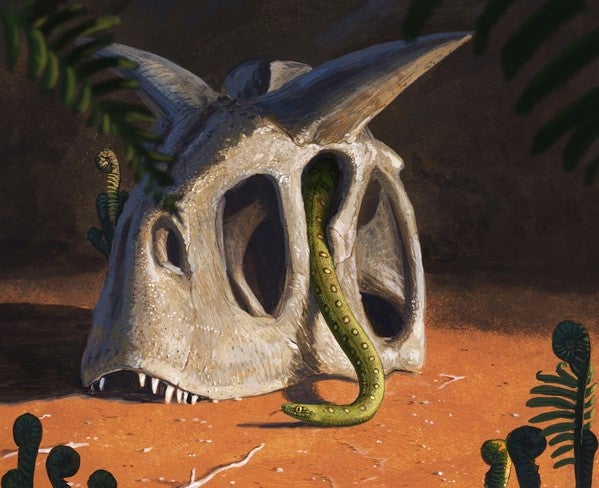Snakes evolved from survivors of dinosaur-killing asteroid, study suggests
Joanna Taylor reports on a new study which suggests all living snakes evolved from a small handful of species that survived the collision of the asteroid that wiped out the dinosaurs on Earth

All living snakes evolved from a handful of species that survived the impact of the asteroid that wiped out the dinosaurs when it smashed into Earth, a new study suggests.
While three-quarters of the plant and animal species living on the planet were destroyed by the collision 66 million years ago, snakes not only survived but soon began to diversify, scientists say.
The study, led by researchers at the University of Bath, found that the reptiles’ ability to shelter underground for long periods without food helped them to survive the collision’s aftermath while the loss of competitors and creation of new habitats allowed them to flourish.
"It's remarkable, because not only are they surviving an extinction that wipes out so many other animals, but within a few million years they are innovating, using their habitats in new ways," lead author Dr Catherine Klein said.
Her team analysed genetic differences between modern snakes, of which there are almost 4,000 living species, as well as fossils to reconstruct the species’ evolution.
They found that snakes began to spread across the Earth shortly after the asteroid hit the planet and a second period of intense diversification occurred as the Ice Ages began.
“This seems to be a general feature of evolution — it’s the periods immediately after major extinctions where we see evolution at its most wildly experimental and innovative,” corresponding author Dr Nick Longrich explained.
“The destruction of biodiversity makes room for new things to emerge and colonise new landmasses. Ultimately life becomes even more diverse than before.”
Snake lineages such as vipers, cobras, garter snakes, pythons and boas emerged after the asteroid hit and the Cretaceous period ended, the authors found, as the eradication of competitors allowed snakes to move into new habitats and even new continents.
Although the ancestor of living snakes probably lived in the Southern Hemisphere, the creatures appeared to have spread to Asia during this time.
Mapping snakes’ evolution also showed scientists that the reptiles underwent a change to their vertebrae after the Cretaceous period which eventually allowed the evolution of modern species like giant sea snakes.
The study, peer-reviewed and published in Nature Communications, shows how major changes in environment can directly impact a species’s evolution and lead to what Dr Longrich called a period of “creative destruction” for animal diversification.

Join our commenting forum
Join thought-provoking conversations, follow other Independent readers and see their replies
Comments